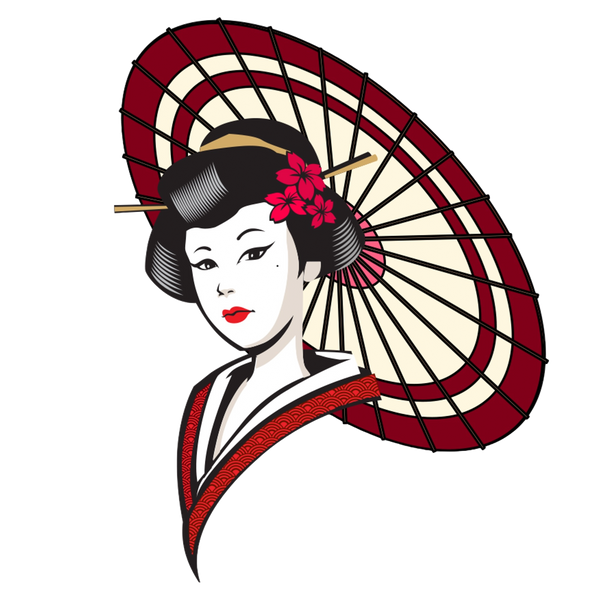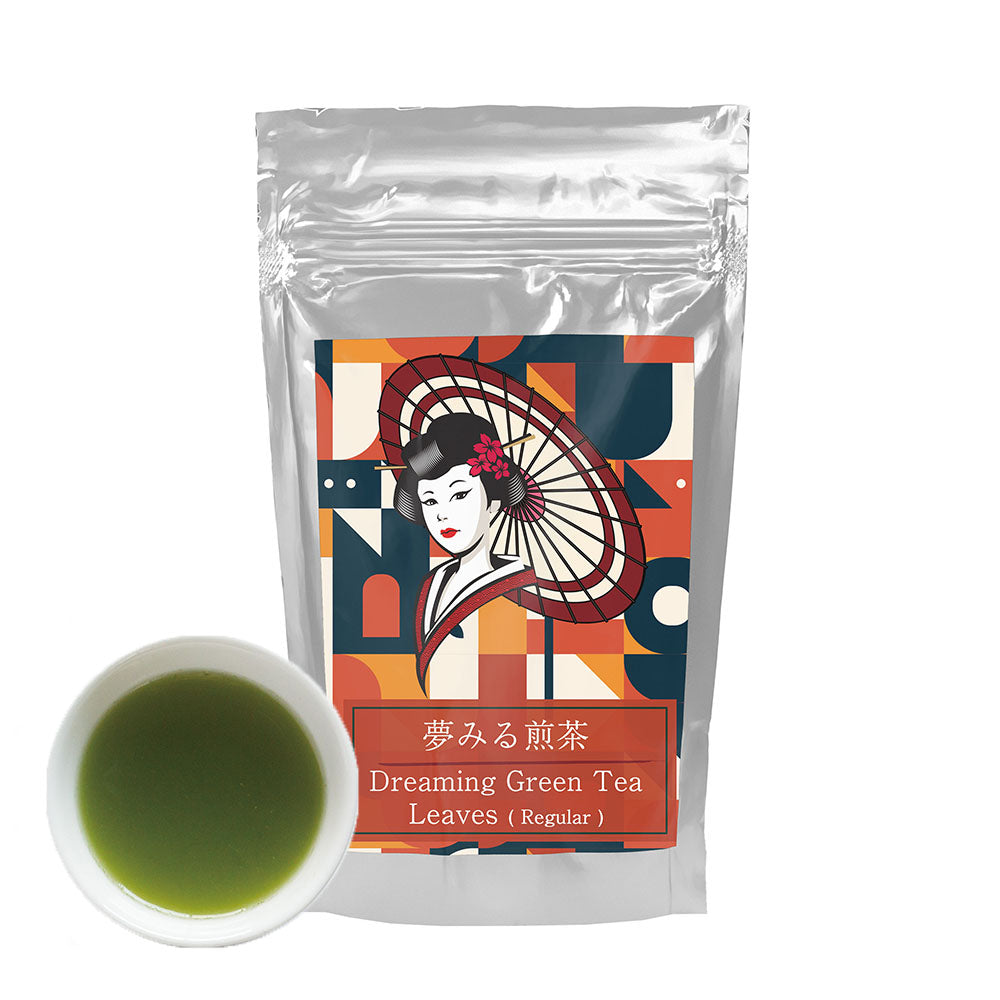Mukoh Matcha
[Dreaming Green Tea Leaves (Classic)] Hoshinocha, Hoshino tea, Yamecha, Yame tea, Sencha Japanese Green Tea "夢みる緑茶"(煎茶 茶葉)星野茶 八女茶
[Dreaming Green Tea Leaves (Classic)] Hoshinocha, Hoshino tea, Yamecha, Yame tea, Sencha Japanese Green Tea "夢みる緑茶"(煎茶 茶葉)星野茶 八女茶
Couldn't load pickup availability
Differences Between "Hoshino Tea" and "Yame Tea"
Hoshino Tea and Yame Tea are both high-quality green teas produced in Fukuoka Prefecture, Japan. Despite their similarities, each has distinct characteristics. Here is a detailed explanation of their differences:
Yame Tea
Region:
- Yame Tea is produced mainly in Yame City, Fukuoka Prefecture. The city is the central production area for this tea.
Characteristics:
- Flavor: Yame Tea is known for its mellow and sweet taste with a smooth texture.
- Aroma: It has a deep aroma and a lingering aftertaste.
- Color: Yame Tea boasts a beautiful deep green color.
Cultivation Methods:
- Yame Tea is often grown using traditional shading methods (kabuse), where the tea leaves are shaded from sunlight for a certain period before harvest. This enhances the sweetness and umami.
Hoshino Tea
Region:
- Hoshino Tea is produced in the small area of Hoshino Village within Yame City. The village is located in a mountainous region with frequent mist, creating ideal conditions for tea cultivation.
Characteristics:
- Flavor: Hoshino Tea is considered particularly high-grade among Yame Teas, with a strong sweetness and rich umami.
- Aroma: It also has a deep aroma, but with a more delicate fragrance compared to regular Yame Tea.
- Color: Hoshino Tea has a vivid deep green color, making it visually appealing.
Cultivation Methods:
- Hoshino Tea is grown using shading techniques similar to Yame Tea but is often harvested by hand, ensuring meticulous quality control and the production of premium tea leaves.
Commonalities and Differences
- Commonalities: Both Yame Tea and Hoshino Tea are produced in Yame City, using shading cultivation methods that result in strong sweetness, umami, and deep aroma.
- Differences: Hoshino Tea is considered a superior grade within Yame Tea, limited to the Hoshino Village area, making it even higher in quality. Its production volume is lower, adding to its rarity.
Conclusion
Yame Tea and Hoshino Tea are both exceptional green teas representing Fukuoka Prefecture. Hoshino Tea, however, stands out for its superior quality and is produced in a limited area, making it a premium choice. Both teas offer outstanding flavor, aroma, and color, making them a delight for tea enthusiasts. Yame Tea is generally more accessible, while Hoshino Tea is often chosen for special occasions or as a gift.
"Dreaming Green Tea Leaves" (Regular) Sencha Yame Green Tea Leaves are a luxurious offering from Mukoh Matcha, designed for the discerning tea enthusiast. Sourced from the renowned Yame region, known for its superior tea cultivation, these leaves promise an exquisite tea experience. "Dreaming Green Tea" (Regular) Sencha variety is celebrated for its rich, umami flavor, vibrant green color, and aromatic fragrance. Each sip of "Dreaming Green Tea Leaves"(Regular) unfolds a harmonious blend of sweetness and subtle grassy notes, embodying the essence of traditional Japanese tea culture. Perfect for moments of reflection or a sophisticated tea ceremony, this Supreme selection invites you to savor the art of tea with every cup.
🍵 Origin and Prestige: Yamecha comes from the Yame region of Fukuoka Prefecture, Japan, renowned for producing some of the country's finest green teas.
🍵 Quality: Known for its high-grade quality, Yamecha often wins national tea competitions in Japan, showcasing its supreme craftsmanship.
🍵 Distinct Flavor: Yame tea is celebrated for its deep, rich flavor, characterized by a perfect balance of sweetness (umami) and astringency.
🍵 Vibrant Color: The tea leaves produce a bright, vivid green color when brewed, a hallmark of its freshness and high chlorophyll content.
🍵 Aromatic Experience: Yamecha emits a delicate and inviting aroma, enhancing the tea-drinking experience with its floral and grassy notes.
🍵 Versatility in Brewing: Yamecha can be enjoyed in various forms, including Sencha, Gyokuro, and Matcha, offering a range of flavors and strengths to suit different preferences.
Instructions
-
Preheat Your Teapot: Begin by pouring hot water into your teapot and cups to preheat them. This step is crucial for maintaining the water temperature during brewing. Discard the warming water before adding your tea leaves.
-
Measure the Tea Leaves: A general guideline is to use about 2 grams of tea leaves for every 6 ounces (about 180 ml) of water. This equates to roughly 1 teaspoon of leaves per cup. However, you may adjust this ratio based on your personal taste preferences.
-
Heat the Water: The ideal water temperature for brewing Yame supreme green tea is between 70°C to 80°C (158°F to 176°F). If you don’t have a thermometer, boil the water and let it cool for about 2-3 minutes to reach the desired temperature. The lower temperature is key to preventing bitterness and ensuring the delicate flavors and aromas are properly extracted.
-
Brew the Tea: Place the tea leaves in the preheated teapot and gently pour the heated water over them. Cover the teapot with its lid to retain heat.
-
Steep Time: Allow the tea to steep for 1 to 2 minutes. Supreme green tea, especially from Yame, is prized for its subtle flavors, which can be overshadowed by over-steeping.
-
Serve: Pour the tea evenly into each cup, ensuring a consistent strength. If your teapot has a built-in strainer, pour through it; otherwise, use a separate tea strainer.
-
Enjoy Multiple Infusions: Yame supreme green tea leaves are capable of multiple infusions, each offering a unique taste experience. For each subsequent infusion, slightly increase the water temperature and steeping time to extract the full range of flavors.
Share
![[Dreaming Green Tea Leaves (Classic)] Hoshinocha, Hoshino tea, Yamecha, Yame tea, Sencha Japanese Green Tea "夢みる緑茶"(煎茶 茶葉)星野茶 八女茶](http://mukoumatcha.com/cdn/shop/files/Dreaming-Green-Tea-Ragular1.jpg?v=1716085116&width=1445)
![[Dreaming Green Tea Leaves (Classic)] Hoshinocha, Hoshino tea, Yamecha, Yame tea, Sencha Japanese Green Tea "夢みる緑茶"(煎茶 茶葉)星野茶 八女茶](http://mukoumatcha.com/cdn/shop/files/yamecha-yame-green-tea-leaves-mukoh-matcha.jpg?v=1766162081&width=1445)
![[Dreaming Green Tea Leaves (Classic)] Hoshinocha, Hoshino tea, Yamecha, Yame tea, Sencha Japanese Green Tea "夢みる緑茶"(煎茶 茶葉)星野茶 八女茶](http://mukoumatcha.com/cdn/shop/files/Mukoh-Matcha-Green-Tea-Grades.jpg?v=1766162081&width=1445)
![[Dreaming Green Tea Leaves (Classic)] Hoshinocha, Hoshino tea, Yamecha, Yame tea, Sencha Japanese Green Tea "夢みる緑茶"(煎茶 茶葉)星野茶 八女茶](http://mukoumatcha.com/cdn/shop/files/16d42de88dc031807bf14c268124dc07.jpg?v=1766162081&width=1445)
![[Dreaming Green Tea Leaves (Classic)] Hoshinocha, Hoshino tea, Yamecha, Yame tea, Sencha Japanese Green Tea "夢みる緑茶"(煎茶 茶葉)星野茶 八女茶](http://mukoumatcha.com/cdn/shop/files/3-quick-instant-green-tea-mukoh-matcha.jpg?v=1766162081&width=1445)
![[Dreaming Green Tea Leaves (Classic)] Hoshinocha, Hoshino tea, Yamecha, Yame tea, Sencha Japanese Green Tea "夢みる緑茶"(煎茶 茶葉)星野茶 八女茶](http://mukoumatcha.com/cdn/shop/files/4-quick-instant-green-tea-mukoh-matcha.jpg?v=1766162081&width=1445)
![[Dreaming Green Tea Leaves (Classic)] Hoshinocha, Hoshino tea, Yamecha, Yame tea, Sencha Japanese Green Tea "夢みる緑茶"(煎茶 茶葉)星野茶 八女茶](http://mukoumatcha.com/cdn/shop/files/5-quick-instant-green-tea-mukoh-matcha.jpg?v=1766162081&width=1445)
![[Dreaming Green Tea Leaves (Classic)] Hoshinocha, Hoshino tea, Yamecha, Yame tea, Sencha Japanese Green Tea "夢みる緑茶"(煎茶 茶葉)星野茶 八女茶](http://mukoumatcha.com/cdn/shop/files/how_to_brew_green_tea_en.jpg?v=1766162081&width=1445)
![[Dreaming Green Tea Leaves (Classic)] Hoshinocha, Hoshino tea, Yamecha, Yame tea, Sencha Japanese Green Tea "夢みる緑茶"(煎茶 茶葉)星野茶 八女茶](http://mukoumatcha.com/cdn/shop/files/Dreaming-Green-Tea-Ragular2.jpg?v=1766160577&width=1445)









